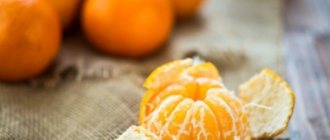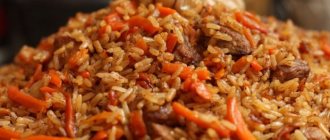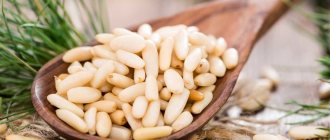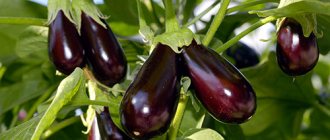Fruit composition
Nature has created many types of nuts. Sweet almonds are valued for their special taste and unique properties for human health. This is a hearty treat. Nutritional and energy value per 100 grams of peeled fruits:
- proteins 18.5 g;
- fats 53.5 g;
- carbohydrates 13 g;
- organic acids;
- bioflavonoids;
- calorie content is 597 kcal.
The ratio of proteins, fats and carbohydrates (BJU) is: 13%/78%/9%. The nutritional value is mainly influenced by fats.
The amount of protein in almonds is close to that in beef. But at the same time, you should not think that you can replace the entire requirement with vegetable protein; animal proteins should make up at least half of the daily requirement.
Calorie content varies depending on the cooking method. There are 640 kilocalories per 100 grams of roasted nuts. The kernels are rich in vitamins and microelements necessary for humans.
| Amount of substances per 100 grams of dry product | |||
| Vitamins | Minerals | ||
| B1 (thiamine) | 0.22 mg | Magnesium | 238 mg |
| B2 (riboflavin) | 0.61 mg | Potassium | 748 mg |
| B5 (pantothenate) | 0.04 mg | Calcium | |
| B6 (pyridoxine hydrochloride) | 0.30 mg | Fluorine | 88 mcg |
| B9 (folic acid) | 38.4 mg | Selenium | 2.1 mg |
| B4 (choline) | 50 mg | Sodium | 2.9 mg |
| C (ascorbic acid) | 24.9 mg | Iron | 4.2 mg |
| PP (niacin) | 3.4 mg | Manganese | 1.6 mg |
| E (tocopherol) | 24.2 mg | Chlorine | 33mg |
| A(retinol) | 3 mcg | Copper | 130 mg |
| Phosphorus | 474 mg | ||
| Iodine | 2.1 mg | ||
Sweet almonds contain unsaturated fats - Omega 3, 6, 9. Unlike animal fats, they do not threaten weight gain when consumed in moderation. It contains rare substances that are beneficial for visual acuity - lutein and zeaxanthin. Nuts include the important substance arginine, this amino acid regulates blood sugar.
Beneficial properties of sweet almonds for mother
During breastfeeding, the mother loses valuable substances with milk, which are used for the development of the baby. To make up for the deficiency, adequate nutrition is necessary. The fruits serve as an excellent snack for the mother. To satisfy your hunger, it is enough to eat 10 nuts.
Almonds are good not only for a nursing mother, but also for a child. The product contains a harmonious balance of proteins, fats, carbohydrates. It contains vitamins and microelements. All these substances increase the fat content of breast milk. If the baby is not gaining weight well, the mother should include nuts in her diet.
Benefits of almonds:
- a complex of B vitamins relieves irritability, which is often found in young mothers after childbirth;
- zeaxanthin and lutein support vision;
- ascorbic acid improves immunity, weakened during pregnancy;
- amino acids valine, tryptophan, leucine, histidine improve brain function;
- the low glycemic index of kernels helps regulate a woman’s blood sugar during feeding;
- polyunsaturated fatty acids reduce cholesterol.
Sweet almonds are a natural analgesic. The kernels relieve headaches and muscle pain in women. Daily consumption of nuts replenishes the deficiency of potassium, magnesium, and calcium, which are important for the functioning of the heart. Having learned about the beneficial properties of almonds for themselves, mothers ask whether almonds can be consumed while breastfeeding. Nuts can and should be consumed during lactation. You just need to know how much to eat and when to introduce it into your diet.
Almond Recipes
When breastfeeding, it is necessary to carefully plan the mother's menu. Sauces and mayonnaise are undesirable for consumption. Try making Lenten dressing - a delicious and healthy recipe for your mother’s table.
Also find out how much almonds you can eat to get the benefits.
Lenten dressing
Soak ¾ cup of nuts in cold water overnight, remove the peels, and grind in a blender. Add 30 ml of lemon juice, a clove of garlic and parsley and dill (can be dried). Pour in 150 ml of chilled boiled water and whisk again.
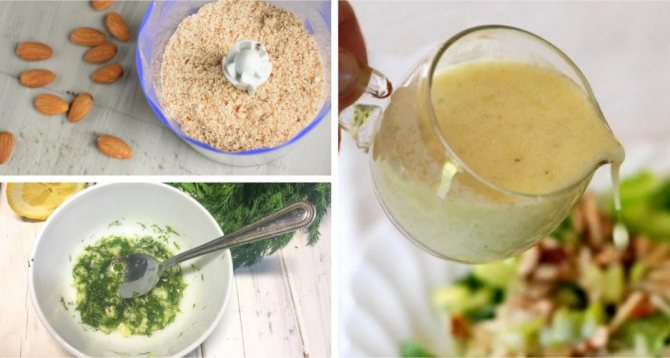
Macaroons
Grind 200 g of kernels in a blender into almond flour, add 100 g of sugar, 100 g of vegetable oil, half a teaspoon each of salt and soda. Add water until you get a tight dough, roll it out, cut out any shape. Place the figures on parchment and place in the oven for half an hour at 180 degrees. Quick and healthy recipe.

Almond sweet soup
Grind 150 g of peeled nuts in a blender or meat grinder, pour in 1 liter of hot milk, add 100 g of steamed rice and bring the rice until cooked. Season the soup with raisins and sugar to taste. The unusual taste and aroma of almonds will surprise a young mother.

So, the main rules for consuming almonds while breastfeeding are as follows: it is not recommended to introduce nuts into the diet until the baby is 2–3 months old. When consuming, you should not experiment by adding several new products to your diet. You should carefully monitor your baby's reaction after eating. Almonds are a healthy product that can support the immunity of mother and baby, promote normal development and growth, and restore the mother’s physical fitness after childbirth.
At what month of the child are fruits allowed to the mother?

Newborns are especially sensitive to many foods. They have a weak immune system. All organs are just adapting to new living conditions. But a reasonable approach to nutrition can avoid problems.
An obstacle to including almonds in the diet while breastfeeding is the possible development of allergies in the child . All nuts are allergenic to one degree or another.
To avoid such consequences, it is forbidden to include it in the mother’s diet during the first month after childbirth. During this time, her body should recover. If a woman feeds her baby with her milk, the diet consists of light foods. It is advisable to abstain from nuts in the second month.
It is allowed to try almonds during breastfeeding only at 3-4 months of a baby’s life. If you do not adhere to these deadlines, the baby may develop severe allergies.
Almond storage

An important aspect is the storage of almonds. In order to preserve its beneficial properties for a long time, it is necessary to ensure proper storage by placing it in a cool place in a container with an airtight lid. If storage involves several months, then the almonds can be frozen. This way you will keep the nuts fresh for a long time.
So, we have come to the conclusion that almonds can be consumed during breastfeeding if you follow the recommended intake of 30 grams. In the absence of a negative reaction, almonds will bring invaluable benefits to your health and your baby.
How to add nuts to the menu
Nuts are a difficult product for a newborn’s digestive system. During lactation, they are introduced into the mother’s diet with the following precautions:
- You can try only almonds for the first time, without mixing them with other foods. If an allergy occurs, it is easier to determine its cause.
- It is better to enter into the menu in the morning. This will make it possible to observe the baby’s reaction throughout the day.
- To reduce the risk of bloating in a child, the kernels should be peeled. This recommendation applies throughout the entire breastfeeding period.
After using the kernels for the first time, observe the baby's reaction. If the baby does not cry and there is no rash on the body, you can eat nuts.
If after a trial of eating almonds the baby develops colic, the next time the mother is allowed to introduce the fruit into the menu only after a month. During this time, the child’s digestive system will become stronger.
Is it possible for pregnant and lactating women
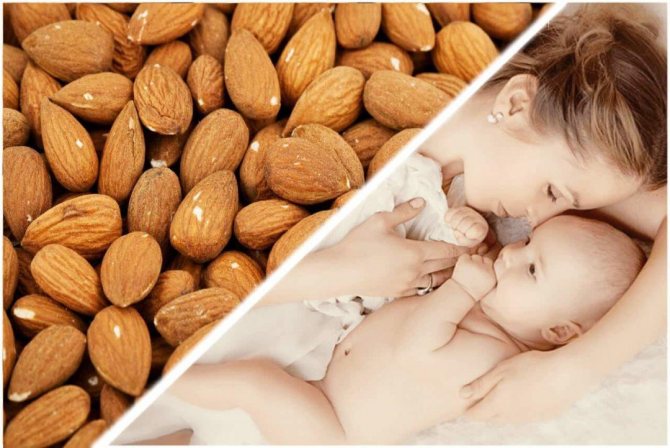
Eating almonds during pregnancy is allowed, but you need to do it correctly so as not to harm the baby.
The product contains folic acid, which is involved in the formation of the brain, nervous system and metabolic processes. If you include nuts in your diet in small quantities, this will compensate for the lack of vitamins, fatty acids and mineral components.
Pregnant women are recommended to consume almonds, as they reduce the risk of miscarriage and prevent the development of jaundice in the newborn.
The product is also useful during lactation, but you will have to follow these rules:
- Introduce into the diet only 3 months after the start of breastfeeding.
- First, try less allergenic nuts, for example, hazelnuts, pine nuts, and walnuts. If the body perceives them normally, you can eat almonds. For the first time, you need to eat one nut and observe the reaction for several days. If there are no signs of allergies or indigestion, you can increase the dosage.
- If a child develops rashes or red spots on the skin, stools are disrupted, or intestinal colic occurs, almonds will have to be abandoned.
- The product should not be abused even with a normal reaction. No more than 30 g per day is allowed.
Mom can eat dried nuts while breastfeeding. They are easier for the body to absorb, but their beneficial properties are retained. You can dry the almonds by placing them in the oven for 10 minutes at 150 degrees.
Which almonds are best to eat during lactation?
Advice! If, after the mother eats a raw nut, the child develops colic in the stomach. Calcine the kernels in a dry frying pan or oven.
Step by step steps before drying:
- Brew almonds with boiling water.
- Place in a bowl of cold water.
- Remove the skin.
- Place on a baking sheet lined with parchment.
- Place in the oven preheated to 150°C for 10 minutes.
The main thing is to remember that you can only eat sweet almonds. The bitter variety contains the toxic substance amygdalin , which is dangerous for adults and children. It is used only in cosmetology in the form of oil, and even then in minute quantities. In cooking, a small amount of bitter almonds is added to desserts and baked goods. Store-bought baked goods can cause allergies in an infant. It's better to make homemade cookies with sweet almonds.

If you get tired of snacking on nuts, add the fruits to various dishes. They improve the taste of porridge, chicken salad or fruit. Mothers prepare fragrant almond cookies. During lactation, milk from kernels is useful.
Harm of nuts for pregnant women
Almonds are beneficial during pregnancy, but they are not always safe.
Many people think that it is harmful in the first trimester, but this is not true. During this period, there is a high risk of spontaneous miscarriage, and the presence of vitamin E in the composition allows you to maintain the normal course of pregnancy.
But in some cases the product is dangerous. If you eat unripe or low-quality nuts, they will lead to food poisoning. In addition, even ripe almonds sometimes cause severe allergies, which are dangerous during pregnancy. Therefore, in order for the nut to provide only benefits, you need to follow these rules:
- Avoid green almonds.
- If you have a predisposition to allergies, it is better to avoid it.
- If weight gain has increased, the dosage of nuts should be reduced to a minimum.
- When choosing in a store, pay attention to the condition of the shell. There should be no mold on it. Also, you should not eat nuts with foreign odors.
- Fans of fried kernels will have to prepare it using the dry frying method, without the use of oil.
Almonds are beneficial for both women and men. But in order for the product to only improve the condition of the body and not harm it, it should be used correctly and without fanaticism.
How many almonds are you allowed to eat?
An important point for introducing almonds into the diet of a nursing mother is the permissible dose according to the baby’s age:
- after three months of the child’s life, the mother can eat no more than 5 kernels once a week;
- after the fourth month - 10 fruits once every 7 days;
- after the fifth - 20 cores twice a week.
Almonds have a positive effect on breastfeeding. First of all, lactation increases. The milk becomes fatty. Its nutritional value increases.
Important! In some babies, fatty milk causes loose stools. In this case, reduce the amount of nuts or eat less often.
Almond allergy
It is advisable to introduce almonds into the menu when the diet is already fairly organized and no changes are expected in it in the near future. Or at least keep your diet consistent. Then, if your baby develops an allergy, you will know for sure that the new nut is to blame.
Of course, your child will not necessarily develop allergic reactions. There are children who completely calmly tolerate the introduction of any nuts into their mother’s diet, even those that are considered highly allergenic. But a rather violent reaction of the baby’s body to almonds is still possible, especially in the first month. Therefore, introduce it into your diet in very small quantities, gradually. Start with a couple of nucleoli. Discontinue the product immediately if your child develops:
- redness on the skin, and even more so a rash;
- digestive disorders;
- colic.
All this does not mean that your child has an absolute intolerance to nuts; it’s just that almonds when feeding a newborn may well be inadequately accepted by a fragile organism. Wait until your child is a little older and try again.
If after the first portion of nuts the baby does not have any allergies, do not rush to greatly increase the amount of almonds. After a few days, start adding literally one kernel at a time, but not more than the daily dose recommended above (30 g). Almonds during lactation, if there is too much of it, cause thickening of the milk, and lactostasis is possible (milk stagnation in the ducts).

Contraindications
Despite their beneficial qualities, almonds are contraindicated for consumption by a nursing mother under certain conditions:
- nut protein allergy;
- heart rhythm disturbances;
- obesity.
Kernels are a high-calorie treat. If a nursing woman is overweight after childbirth exceeding 20 kg, you should not snack on nuts.
After eating almonds, a woman or child may develop an allergy to the nut protein. Signs of a reaction:
- body rash like hives;
- heartbeat;
- pale skin;
- swelling of the earlobes;
- hoarseness of voice.
Attention! If such warning signs appear, immediately call an emergency team. Symptoms of Quincke's edema are life-threatening.
How to choose the right nut
When purchasing, you should taste the nuts. If the kernel tastes bitter when you bite it, don’t buy it. Bitter almonds are inedible and dangerous. Cyanide compounds in the composition cause poisoning. When purchasing peeled sweet fruits, adhere to the following criteria:
- kernels of the same size and color are covered with skin;
- the surface is smooth without stains or streaks;
- The aroma is pleasant without any foreign smell.
Signs of mold indicate contamination of the product with a dangerous fungus that emits the poison aflatoxin. Such almonds cause poisoning.
In moderate quantities, almonds have a beneficial effect on the health of nursing mothers and babies. It is useful to include nuts in the diet if there are no contraindications.
Benefits for women
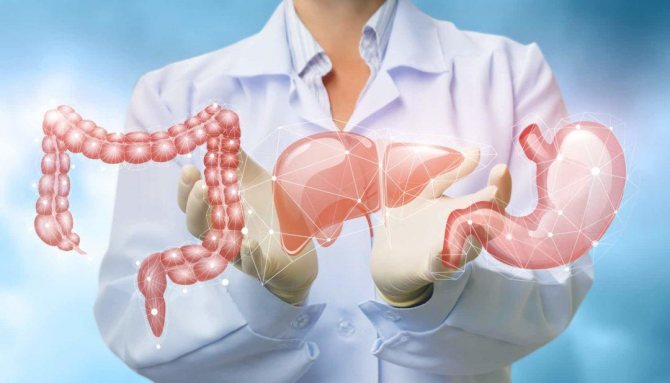
Almonds contain components that ensure the normal functioning of the body. This product has a beneficial effect on:
- Heart. Improves the condition of blood vessels, prevents the development of atherosclerosis, which is explained by the amino acids and flavonoids in the composition, which activate blood circulation and improve the absorption of tocopherol.
- Brain. Under the influence of B vitamins, magnesium and kartinine, brain activity is activated, concentration is enhanced, and performance increases. Therefore, this product is especially popular among knowledge workers.
- Nervous system. Eating nuts helps normalize sleep, increase stress resistance, and speed up recovery from depression.
- Skin. The high content of vitamin E and antioxidants has a beneficial effect on hair and nails. Almond oil has softening, moisturizing and cleansing properties, so it is widely used in cosmetology.
- Digestive system. Dietary fiber improves intestinal motility, flavonoids and amino acids activate the processes of eliminating toxins.
In addition, the nut has other properties:
- Helps reduce the likelihood of developing cancer.
- Supports visual acuity.
- Normalizes metabolism.
- Facilitates the process of losing weight.
The product is rich in micro- and macroelements involved in the formation of bone tissue. Therefore, it is often included in the diet of children.
